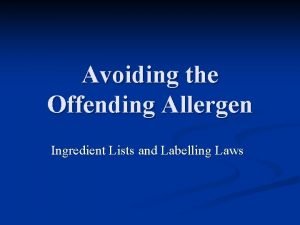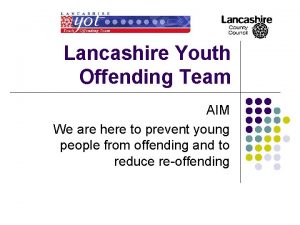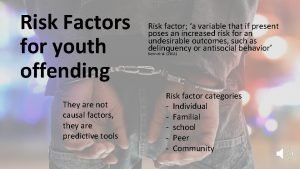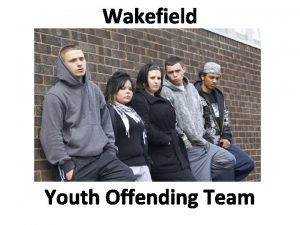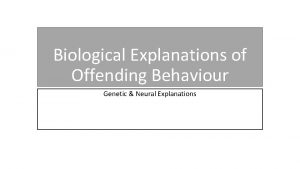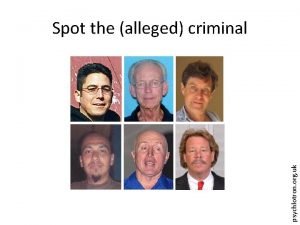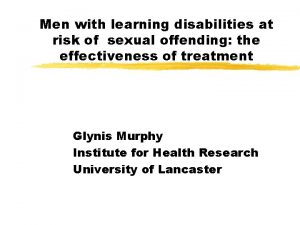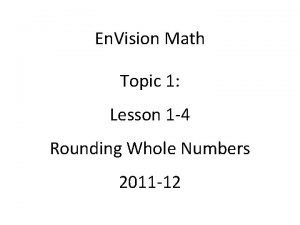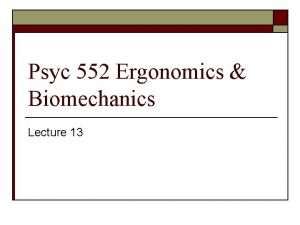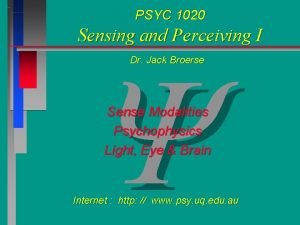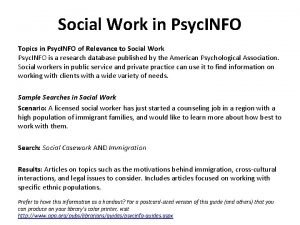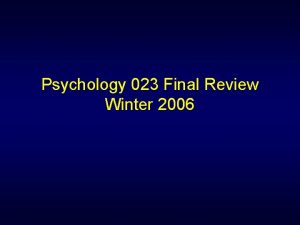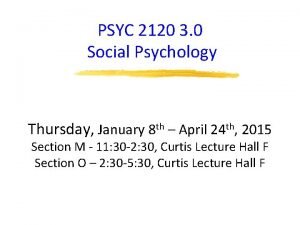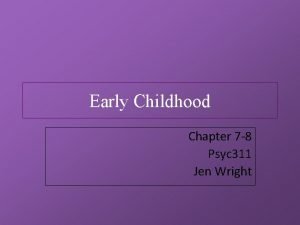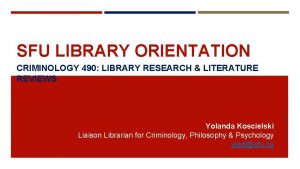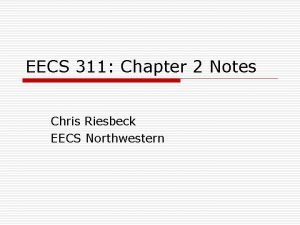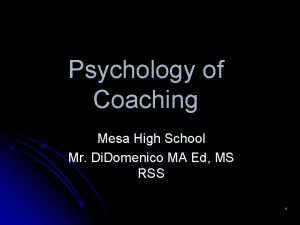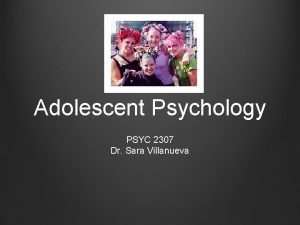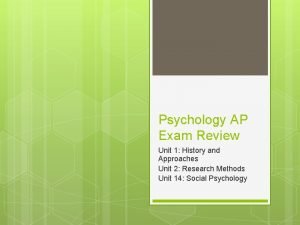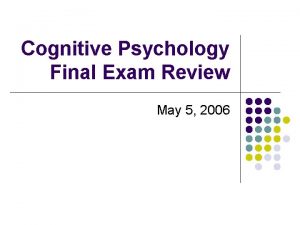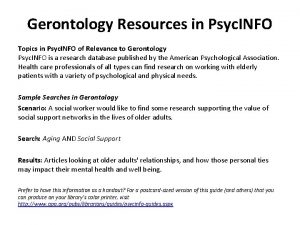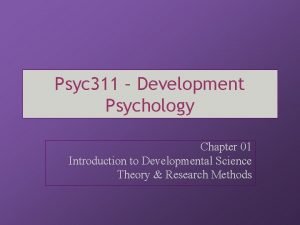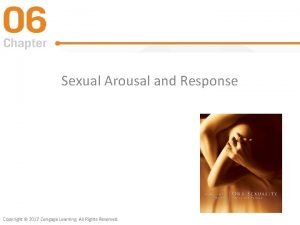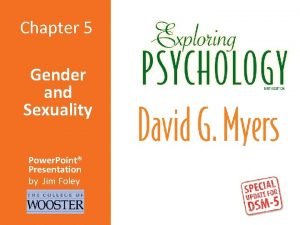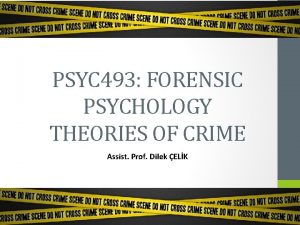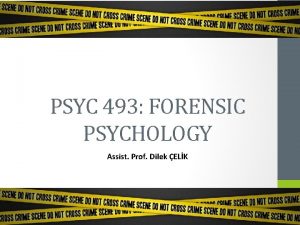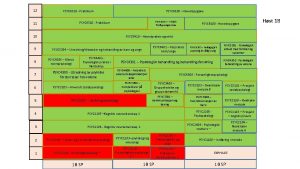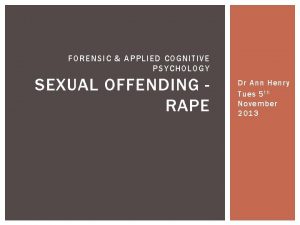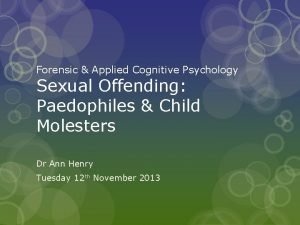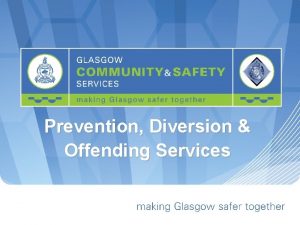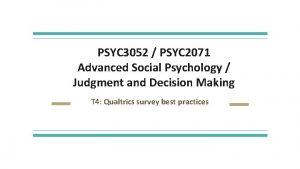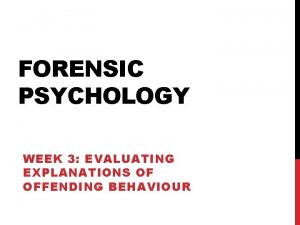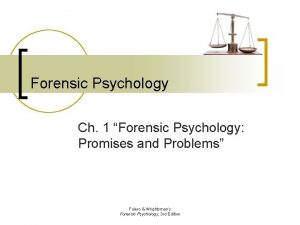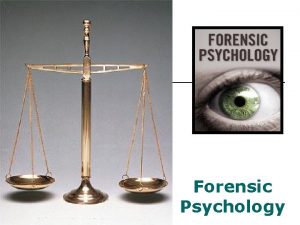PSYC 493 FORENSIC PSYCHOLOGY THEORIES OF SEXUAL OFFENDING
































- Slides: 32

PSYC 493: FORENSIC PSYCHOLOGY THEORIES OF SEXUAL OFFENDING Assist. Prof. Dilek ÇELİK

Public Attitude toward Sexual Offenders • Extreme hostility & negative stigma towards pedophiles • Recidivism comparatively low • Megan’s law (USA) Megan abducted & murdered in 1994 • Sarah’s Law (UK) abducted & murdered in 2000.

MEGAN’S LAW • Laws were created in response to the murder of Megan Kanka. • The murder of Megan Nicole Kanka (December 7, 1986 – July 29, 1994) occurred in Hamilton Township, Mercer County, New Jersey, United States. The seven-year-old was raped and murdered by her neighbor Jesse Timmendequas. The murder attracted national attention and subsequently led to the introduction of "Megan's Law", which requires law enforcement to disclose details relating to the location of registered sex offenders. • Federal Megan's Law refers to community notification (making registry information public), whereas state level "Megan's Law" may refer to both sex offender registration and community notification.

SARAH’S LAW • EIGHT-YEAR-OLD Sarah Payne was running through cornfields when she was abducted and murdered by paedophile Roy Whiting. (UK) • After her death her parents campaigned to change the law so other mums and dads could find out if a child sex-offender was living in their area. • The scheme is for any member of the public who wants to find out if an individual in contact with a child has a record of child sexual offences. • If police checks show the individual has a record for child sexual offences, or other offences that might put the child at risk, the police will consider sharing this information. The police will disclose information only if it is lawful, necessary and proportionate to do so in the interests of protecting the child, or children, from harm.

Offending Cycle Self - Centred Internal Conflict Shame, self-pity, personality driven depression, self-defeating behaviour 5 Offending Behaviour Along continuum of sexual aggression Offence - Directed Behaviour Victim targeting, grooming, setting up the offence scenario 4 6 Self - Directed Cognitive Distortion Denying, rationalising, minimising, sanitising, and avoiding detection 3 Conscious Intentions to Offend Acting in a manner that enhances the fantasies, imagery, arousal and/or impulses 2 1 Deviant Sexual Fantasies and Images Experiencing feelings/arousal that reinforces the deviant imagery

Sexual Offending: Theories of Paedophilia • • Preconditions model Psychotherapeutic/ cognitive model Sexualisation model Pathways model

Sexual Offending • Preconditions model of child molestation • Araji & Finkelhor (1985) • 1) Emotional congruence with children (lack self-esteem, psychosocially immature, may have need to dominate) • 2) Social arousal by children (child pornography, hormonal abnormalities/ imbalances) • 3) Blockages preventing adult contact (lack effective social skills, problems relating to adult females, repressive sexual socialisation in childhood) • 4) Disinhibition of norms against adult/child sex (offenders may be senile, alcohol may decrease inhibitions, incest-tolerant subculture)

Critisim for Predispositions Model • This model is relatively old and was developed at a time when empirical research on sex offenders was very limited in its scope. • It is based on a number of almost common-sense assumptions, not all of which have or had been supported and some of which have not even been adequately tested. • It assumes that child molestation is multiply caused and does not assume that any of the preconditions are necessarily involved in any given case. • It has the advantage of linking theory with therapy that has tended to assume the multi-causality of abusive behaviour and, consequently, the need for complex therapeutic methods.

Sexual Offending • Psychotherapeutic/ cognitive model • Suggests 4 steps • 1) Cognitive distortions/ distorted thinking e. g. having sex with a child is a good way of an adult teaching a child about sex. Beliefs about sexual nature of children. • 2) Grooming (bribes of sweets, other treats, trips out, threats of violence) • 3) Planning through fantasy- this is the idea that the offender plans in fantasy the likely scenarios of events in, for example, finally trying to seduce the child. What will they do, say, if a child says they are going home? • 4) Denial – denying the consequences of their actions

Degrees of Denial WHY DID YOU SEXUALLY ASSAULT THE VICTIM? NOTHING HAPPENED ‘I never laid a finger on her’ ‘The boy’s lying’ ‘The cops are out to get me’ SOMETHING HAPPENED BUT AND IT WASN’T MY IDEA ‘The kid came on to me’ ‘She was all over me’ IT WAS MY IDEA BUT AND IT WAS SEXUAL AND IT WAS WRONG BUT THERE WERE EXTENUATING SITUATIONAL CIRCUMSTANCES ‘I was having money problems’ ‘I was drinking too much’ ‘My wife wouldn’t sleep with me’ BUT IT WASN’T SEXUAL ‘I was being affectionate’ ‘I was angry at my wife’ ‘I was teaching her to be careful’ IT WASN’T WRONG ‘There’s nothing wrong with it’ ‘She liked it’ BUT THERE WERE EXTENUATING PSYCHOLOGICAL FACTORS ‘I was sexually abused as a child’ ‘I don’t know what got into me’ ‘Women scare me’

Sexual Offending • Sexualisation model • Howitt (1995) Experience of sexual abuse in childhood is a developmental process which can lead to paedophilia. • Early sexual abuse – especially if extreme or repeated - possible sexual experience with peers • Adolescent paedophile career – paedophile adult • Early access to pornographic images/material • Controversial theory as women are more likely to be victims of childhood sexual, but less likely to be sexual offenders

Isomorphism hypothesis? ! Being victim of sexual abuse as a child Being victim of physical abuse as a child Sexual Offending Being victim of sexual abuse as a child Being victim of physical abuse as a child ACE Agression & Physical Violence Sexual Offending Agression & Physical V. Any type of deviance, criminal carreer as well as internalizing problems

Isomorphism hypothesis? ! • Close relationship between the characteristics of abuse and its effect on the victim. • Widom (1989) explored links between childhood abuse and adult criminality. • Victims of physical abuse have highest rates of violent offences (16% of sample) • Victims of neglect had similar levels of violence (13%) • Controls (not abused as children) had 7% risk of violent offending in adulthood • Hence, evidence is inconclusive & other criminogenic factors need to be taken into consideration

CHILDHOOD ABUSE HISTORY IN SEXUAL OFFENDERS

CHILDHOOD ABUSE HISTORY IN SEXUAL OFFENDERS • Comparison of male sexual offenders ACE with general population (Levenson et. al. , 2016) • • Sexual abuse X 3 Physical abuse X 2 Verbal abuse X 13 Emotional neglect & coming from broken home X 4 • Less than 16% percent of the sexual offenders reported zero ACE • More than 50% have 4 or more ACE

Sexual Offending • Pathways model (Ward & Siegert, 2002) • Multi-factorial model – combining elements of previous models/ theories • Distal & Proximal factors • Distal factors: these are causal factors which lie in the predispositions of the offender. They may have a num- ber of origins. They may be in the genetic make-up of the offender or in his childhood development and beyond. They are long-term psychological mechanisms which may lead to offending when the environmental situation encourages offending. • Proximal factors: these are the factors in the environ- ment that change the distal factors into actual offend- ing. They, in other words, trigger the predispositions into action. Possible proximal factors could include negative mood states or stress.

Pathways Model • 4 psychological mechanisms • • 1) Intimacy & social skills deficits 2) Deviant sexual scripts 3) Emotional dysregulation 4) Cognitive distortions

Pathways Model • 1 - Intimacy & social skills deficits • As a consequence of abuse and/or neglect in childhood, the ways in which a child understands relationships and ‘the emotional availability’ of important others are adversely affected. • They may have difficulties in emotional disclosure to others. • Insecure attachment can result in lasting difficulties in managing mood and problem solving. • When faced with rejec- tion or emotional loneliness, the offender diverts his attentions towards children.

Pathways Model • 2 - Sexual scripts: • ‘A sexual script spells out when sex is to take place, with whom, what to do, and how to inter- pret the cues or signals associated with different phases in a sexual encounter. These cues can be internal to the individual, interpersonal, or broadly cultural in nature’ • The distorted script might involve inappropriate sexual partners (e. g. age discrepancy), inappropriate behaviours (deviant practices) or inappropriate contexts (e. g. sex devoid of interpersonal feelings).

Pathways Model • 3 - Emotional Dysregulation • The offender may exhibit emotional dysregulation when, for example, avoiding guilt and other emotional feelings while offending against children or when they fail, for whatever reason, to use coping skills to deal with stress, leaving them at greater risk of offending against children.

Pathways Model 3 - Cognitive Distortions Children as sexual objects Entitlement- to have their sexual needs met Dangerous world – children seen as reliable & trusting & gives offender comfort against danger • Uncontrollable – claims not to be on control of own actions & blames outside factors e. g. drugs/ alcohol • Nature of Harm – believes not all sexual activity is harmful & children can benefit from sexual activity with adults • •

Ø Pathways Model of Child Sexual Abuse (Ward and Siegert 2002) Intimacy Deficits Theoretical morphing: Deviant Sexual Scripts · Normal sexual scripts · Offend at specific times; child is pseudo-adult · Distorted (subtle) sexual scripts · Interact with dysfunctional relationship schemas Finklelhor's Precondition Theory Hall & Hirschman’s Quadripartite Theory (critical threshold) Marshall & Barbaree’s Integrated Theory (negative early – life experiences Sexual Offending Emotional Dysregulation Multiple Dysfunctional Mechanisms · Normal sexual scripts · Dysfunctional emotional regulation · Deviant sexual scripts · Deviant fantasies · Generally comorbid psychopathologies Antisocial Cognitions · No distorted scripts · Offending reflects general pro-criminal beliefs/attitudes

Risk Assessment • Recidivism – relapse into crime • Risk & dangerousness • Various statistical measures: • PCL-R-The Hare Psychopathy Checklist-Revised • HCR-20 -The Historical Clinical Risk Management-20 • SVR-20 -Sexual Violence Risk-20 • Risk factors: Static & Dynamic • Static factors (e. g. age, gender, history of violence, personality disorder, major mental illness etc. ) • Dynamic factors (e. g. emotional & cognitive disposition, impulsivity, active symptoms of major mental illness, location, associates, lack of support)

Risk Assessment • Biggest role for mental health professionals and criminal justice workers • How likely are they to reoffend? • Static risk factors - Actuarial measures (STATIC-99 R) • Dynamic risk factors - Structured Clinical Judgment (STABLE 2007, RSVP (Risk for Sexual Violence Protocol), SVR-20)

STATIC-99 R • • Age at release Lived with lover 2 years + Index of non sexual violence History of non-sexual violence Prior sex offenses (charges and convictions) Prior sentencing dates Non-contact offenses Unrelated victims, Stranger victims, Male victims

STABLE-2007 • • • • Social influences (negative peers) Relationship stability Emotional identification with children Hostility toward women Social rejection Lack of concern for others Impulsive Poor problem solving skills Negative emotionality Sex drive, sexual preoccupation Sex as coping Deviant sexual preference Cooperation with supervision

Sexual deviance assessments • Remember risk increases with PSYCHOPATHY + SEXUAL DEVIANCE • Penile Plethysmograph (Phallometry ) • The phallometer is a device that measures the amount of penis enlargement as an indicator of sexual arousal. There are two types: • Volume phallometry • Circumference phallometry • Sexual interests questionnaires • Examine: sexual history, masturbatory patterns

Sex Offender Treatment • • • Treatment does reduce risk of recidivism ? ! Lots of controversy, as previous studies had no effect Newer studies show treatment effect Responsivity factors! Risk relevant treatment focus!

Typical Treatment program • • Thinking patterns Relationship patterns Emotional management skills Sexuality (sex as coping, sexual preoccupation, sexual deviancy, sexual consent) Risk identification Crime cycle Safety planning Empathy training? Victim consequences?

Biological Treatments • Surgical Castration • Chemical Castration – Medication • Depends on taking meds • Lots of significant side effects • Need for routine medical follow up • Little empirical evidence that it really works to combat recidivism because they refuse to take it or do not continue it Antidepressant Medications (SSRI’s) - Deals with obsessive thinking about sex - Reduces sexual fantasies as a side effect of those medications

Masturbatory Interventions • Abstinence • Changing sexual fantasy at time of orgasm – Masturbatory Reconditioning • Changing sexual fantasy after orgasm to make use of refractory period (unpleasant sensation) • Carefully tracking fantasies, use of masturbation, feelings prior to masturbation (journalling, logs) • Building in negative fantasies (consequences into deviant fantasy scenarios)

Problems • • • Deniers – I didn’t do it Personality Disorders – I won’t change much Sadists – I really like hurting others Psychopathy – It’s all about me Cognitively impaired offenders – I don’t understand
 Forensic psychiatry vs forensic psychology
Forensic psychiatry vs forensic psychology Pathologist and anthropologist
Pathologist and anthropologist Vanguard plus
Vanguard plus Avoid the offending allergen that
Avoid the offending allergen that Youth offending service
Youth offending service Risk factors for youth offending
Risk factors for youth offending Wakefield youth offending team
Wakefield youth offending team Neural explanations of offending behaviour
Neural explanations of offending behaviour Spot the criminal
Spot the criminal Wolf's cycle of offending
Wolf's cycle of offending Outline and compare two explanations for offending 16 marks
Outline and compare two explanations for offending 16 marks Round 493 295 to the nearest ten thousand
Round 493 295 to the nearest ten thousand 493 rounded to the nearest ten
493 rounded to the nearest ten 295 rounded to the nearest ten
295 rounded to the nearest ten Hymn fill my cup lord
Hymn fill my cup lord Glory glory hallelujah sda hymnal
Glory glory hallelujah sda hymnal Psyc info
Psyc info Psyc 1020
Psyc 1020 Psyc info
Psyc info Yerkes dodson lov
Yerkes dodson lov Psyc 2120
Psyc 2120 Psyc 311 study guide
Psyc 311 study guide Sfu psyc info
Sfu psyc info Psyc 311 textbook notes
Psyc 311 textbook notes Psyc info
Psyc info Psyc 1504 learning journal unit 1
Psyc 1504 learning journal unit 1 Psyc 2307
Psyc 2307 Psyc 1504 final exam
Psyc 1504 final exam Psychology final exam review
Psychology final exam review Psyc info
Psyc info Psyc 311
Psyc 311 Sexual response cycle psychology definition
Sexual response cycle psychology definition Sexual response cycle psychology definition
Sexual response cycle psychology definition



